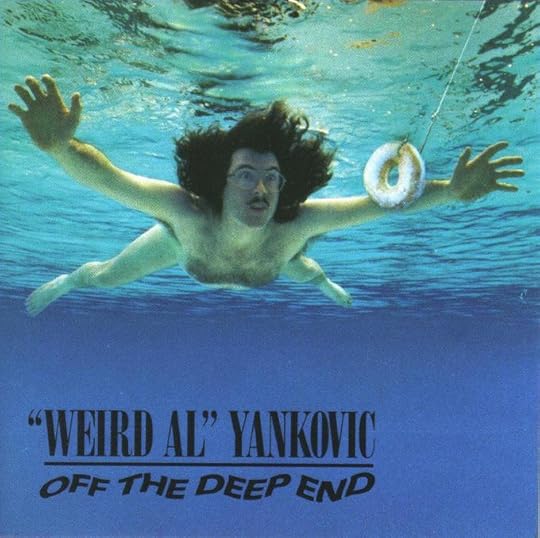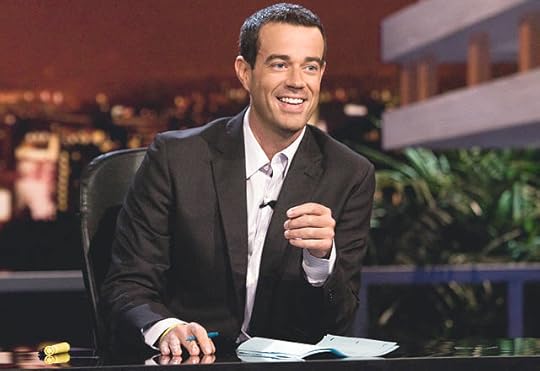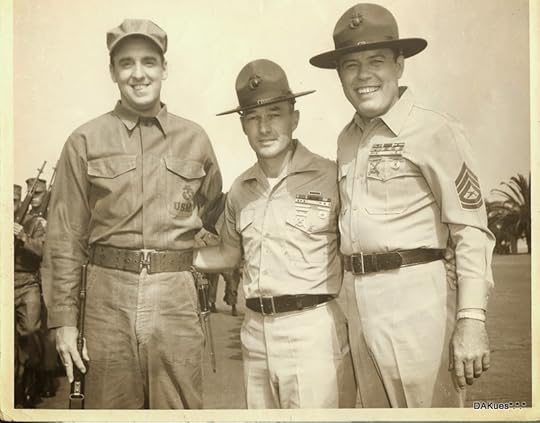Bathroom Readers' Institute's Blog, page 47
January 25, 2018
Can Dogs Smell Emotion?

Dogs’ noses are wondrous things. Their acute sense of smell enables them to be trained to detect bombs and drugs, and find earthquake survivors. But it also makes them fine-tuned to human emotions, strengthening the bond between dog and owner and helping them serve as therapeutic companions to those in distress. (This article was first published in Who Knew? )

A Nose of Two Halves
Dogs have a unique nasal system. Unlike our rather basic noses, where breathing in and out occurs through the same part of the nostrils, dogs’ noses have a clever slit at the sides, where the air passes out. This means they can build up the concentration of a particular scent by drawing more odor molecules into their nose more quickly. Inside their nose there are two separate areas—one for breathing and one for smelling. The smelling region features hundreds of millions of olfactory cells, compared to a human’s meager ten million. These cells are what help to send electrical signals to the brain.
Sense of Smell
It could be said that dogs are wired to smell. The portion of the canine brain dedicated to smell is significantly larger than the relative area used in a human brain. The damp, spongy surface area of the nose works to draw air molecules in. This, combined with the fact that dogs can smell through both nostrils separately, helping them to determine the direction a scent is coming from, makes for a nose of epic capabilities. It can detect and interpret smells at concentrations 100 million times lower than a human can.
How about Hormones?
On top of their super-sensitive sniffing skills, dogs are gifted with a particularly astute vomeronasal organ, which sits above the roof of their mouth. It is also known as the Jacobson’s organ, after its discoverer, anatomist Ludvig Levin Jacobson. Its primary function is to detect pheromones—chemical compounds, often without any discernible scent, that transmit signals between organisms of the same species. They help dogs to identify both potential mates and hostile threats from other animals. Studies have shown that dogs can also pick up on other animals’ pheromones, including those of humans. These pheromone scents can help a dog detect a person’s gender and age, and if a woman is pregnant.
Unfortunately, research into human pheromones is severely lacking. For example, while scientists have been able to identify two pheromones, androstenone and androstenol, that attract fertile female boars to their male counterparts, they’ve not been able to isolate a human equivalent. There is significant evidence from studies, such as babies being able to smell breast milk and adults being able to determine if a person is anxious or not by the smell of their sweat, that shows our pheromones give out signals, but apparently dogs are a lot more adept at reading them than we are.
The post Can Dogs Smell Emotion? appeared first on Trivia Books and Facts | Uncle John's Bathroom Reader.
January 24, 2018
Shine On, Neil Diamond

Neil Diamond is one of the most popular and successful musicians of all time. Here are some surprisingly awesome facts about the man, who recently announced that he was retiring from touring after 50 years in the music business.

Diamond attended New York University on a fencing scholarship. He was part of the squad that won the men’s college national championship in 1960.
Later that year, he dropped out of school to pursue a career as a songwriter. He didn’t earn a comfortable living until 1965, after he’d been hired to write at the legendary Brill Building in New York City. Among his first successes writing for other people: Jay and the Americans’ 1965 hit “Sunday and Me,” and then “A Little Bit Me, a Little Bit You” and “I’m a Believer” for the Monkees. The latter went gold within two days and spent seven weeks at number 1.
Like Elvis Presley and the Beatles, Diamond was positioned as a musical performer so popular that he could star in movies. Unlike the King and the Fab Four, however, Diamond made just one movie, and it was a disaster. In 1980’s The Jazz Singer, and updated remake of the 1927 Al Jolson movie, Diamond played a synagogue cantor who longed to be a rock star. Diamond, 39 at the time of filming but playing a man in his 20s and acting for the first time, “won” the Razzie Award for Worst Actor.
Diamond soured on acting, but he almost appeared in another movie. Plans fell through for him and Barbra Streisand to star in a film adaptation of their 1978 hit duet, “You Don’t Bring Me Flowers.”
E.T. mania gripped the world in 1982, and Neil Diamond was helpless to resist. After he saw the movie with fellow songwriters Carole Bayer Sager and Burt Bacharach, they were so moved that they wrote a song about the titular friendly alien, particularly his glowing heart of love. E.T. rights holders Universal Studios sued Diamond and his-cowriters, and they had to pay $25,000 for unauthorized use of material from the film. The song’s success more than paid for the settlement—it was a top 5 hit in 1983.
Diamond hadn’t had a major hit on the pop chart since 1983 (“I’m Alive”) but he’s still a major force on soft rock radio. His classic songs like “Love on the Rocks” and “Forever in Blue Jeans” still get played on the kinds of stations you hear in offices and at the dentist. Last December his song “The Christmas Medley” hit the top 10 of Billboard’s “Adult Contemporary” chart—Diamond’s 38th song to do so. That’s just one short of the record: 39, held by Elton John.
The post Shine On, Neil Diamond appeared first on Trivia Books and Facts | Uncle John's Bathroom Reader.
Starring Me as Me

Sometimes the only person who can truly tell the story of a person on screen…is that person. Here are some movies based on a true story in which people played themselves.
The Big Sick
The Big Sick was one of the most critically acclaimed movies of 2017. Married screenwriters Kumail Nanjiani (a standup comedian) and Emily Gordon (a producer) based the movie on their own love story. Shortly after they met, Gordon was placed in a medically-induced coma, while Nanjiani neglected to tell his Pakistani-American family that he had fallen in love with an American woman. While Zoe Kazan plays “Emily Gardner” in the film, Nanjiani plays comedian “Kumail Nanjiani.”
15:17 to Paris
Clint Eastwood has directed many actors to an Oscar, such as Sean Penn for Mystic River and Hilary Swank for Million Dollar Baby. For his latest movie, he by and large eschewed such seasoned professionals for a cast of non-actors. The film 15:17 to Paris is a realistic account of the 2015 Thalys train attack in which a terrorist attack on a European train was thwarted by passengers, including three Americans: Anthony Sadler, Spencer Stone, and Alec Skarlatos. It plays up the story’s themes of regular people thrust into a new situation and acting heroically—Eastwood cast Sadler, Stone, and Skarlatos as themselves.
The Greatest
At his peak in the 1970s, who could have played the dazzling Muhammad Ali besides Muhammad Ali? That’s the thinking behind The Greatest, the 1977 Ali biopic covering the boxer’s life from the 1960 Olympics to the 1974 “Rumble in the Jungle” bout with George Foreman. Formidable, full-time actors like James Earl Jones round out the cast (he plays Malcolm X), but Ali stole the show as Ali.
Viva Knievel!
Almost as famous in the 1970s: red, white, and blue-clad motorcycle-riding daredevil Ever Knievel. He was a pop culture phenomenon in the ‘70s. In addition to attempting increasingly death-defying stunts (like jumping over buses, or Snake River Canyon, or using rocket-powered motorcycles), kids could buy Evil Knievel action figures and bikes. He also starred in a movie, the not-at-all based-on-a-true story, Viva Knievel! in 1977. The plot concerns Knievel planning a stunt in Mexico, but he has to thwart a plan by an evil drug lord to kill him. Evel saves his own life, brings the bad guys to justice, and along the way, helps a crippled orphan walk.
The post Starring Me as Me appeared first on Trivia Books and Facts | Uncle John's Bathroom Reader.
January 19, 2018
Does This Chicken Taste Like Toothpaste to You?

Most major companies first find success when one big product breaks through with customers. Then they try to expand their horizons (and profits) with “brand extensions.” Successful examples: Coca-Cola’s Diet Coke, or the Disney movie studio launching Disneyland. Unsuccessful examples: keep reading.
Colgate
The name “Colgate” probably makes most consumers think of toothpaste, which is great—companies fight for years to have that kind of name recognition. However, the other thing people most associate with toothpaste is that you use it and then immediately spit it out of your mouth…which means Colgate’s line of frozen dinners (Colgate Kitchen Entrees) was extremely ill-conceived.
Chicken Soup for the Soul
Back in the ‘90s, Chicken Soup for the Soul was a publishing and cultural phenomenon. Readers bought tens of millions of copies of the various books in the series that collected inspirational, positive, and heartwarming true stories. Beyond the original “flavor,” there were books like Chicken Soup for the Teenage Soul, Chicken Soup for the Canadian Soul, Chicken Soup for the Soul in the Classroom…and then non-book branded products, like Chicken Soup for the Dog Lover’s Soul. It was a little confusing for customers—the cans depicted the ingredients that make up chicken soup, but it was actually a dog food.
Paula Dean
Paula Dean made millions as a cookbook author and Food Network host offering up traditional Southern cuisine. (As far as Deen was concerned, that meant she used tons of butter in most every recipe.) Before some racist comments she once made came to light, Deen’s empire consisted of cookbooks, packaged food products, and, for some reason, a line of chairs and bedroom furniture for kids.
Bic
Bic makes stuff that’s inexpensive and impermanent—qualities that define ballpoint pens and razors, its two most successful products that would otherwise have little in common. A third entry in the cheap-and-disposable canon didn’t work out for Bic. As it turns out, few people wanted to buy cheap Bic Underwear, designed to be thrown out after a use or two.
Harley-Davidson
Harley-Davidson makes the world’s most famous motorcycles. It’s a brand that promises the freedom of the open road, the purr of a powerful engine, and, very briefly, a well-decorated cake. The bike maker licensed its name to Bakery Crafts, which made kits that gave consumers the opportunity to paint the Harley-Davidson logo on top of baked goods with the exact right colors.
The post Does This Chicken Taste Like Toothpaste to You? appeared first on Trivia Books and Facts | Uncle John's Bathroom Reader.
January 18, 2018
“Mean Al” Yankovic?
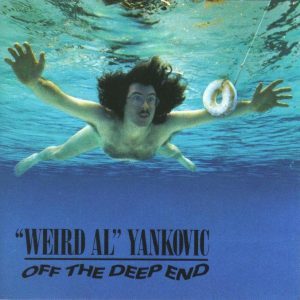
The clown prince of rock n’ roll is known primarily for his gentle, silly parodies of popular songs, most of them about food. But the man behind “Eat It” and “Like a Surgeon” can also get a little nasty.
“It’s Still Billy Joel to Me”
The hottest thing in rock music in 1980 was New Wave, tight, guitar-driven songs inspired by the back-to-basics approach of punk rock, as well as a thorough rejection of the overblown arena rock and progressive rock of the ‘70s. Billy Joel got on the bandwagon with “It’s Still Rock and Roll to Me,” a New Wave song in which Joel personally defends New Wave, along with any and all other rock subgenres because, hey, “it’s still rock and roll” to him. Later in 1980, “Weird Al” Yankovic, who had just had his first hit with “My Bologna,” an accordion-based parody of the Knack’s New Wave smash “My Sharona,” thought Joel’s hit was smug and uncalled for. So he recorded—but never officially released—“It’s Still Billy Joel to Me.” Sample lyrics: “What’s the matter with the tune he’s writin’ / Well, you know it’s gonna be a smash / It’s so nice when you’re a big name artist / Doesn’t matter if it sounds like trash.”
“(This Song’s Just) Six Words Long”
Who dares make fun of the “Quiet Beatle”? In 1987, George Harrison made a very welcome return to the pop chart—and hit #1 with—a catchy, synthesizer-heavy cover of an old R&B song called “Got My Mind Set on You.” Was it a little repetitive, and a little lightweight, lyrically-speaking? Sure. And Yankovic pointed that out with his 1988 parody, “(This Song’s Just) Six Words Long.” The song is self-aware, as Yankovic sings the actual lyrics “this song is just six words long” over and over until he breaks into some verses about how hard it is to write a good song.
“Achy Breaky Song”
Yankovic doesn’t usually employ a parody to mock the musician who performed the original, but he did with his send-up of “Achy Breaky Heart” and its singer, Billy Ray Cyrus. Cyrus briefly became a superstar in 1992 with his country and pop hit, which inspired a line-dancing fad in bars across America. Yankovic’s take places Cyrus, “Achy Breaky Heart” and all that they represent into a box with other embarrassing musical acts of the past, such as Vanilla Ice, New Kids on the Block, and the Osmonds.
The post “Mean Al” Yankovic? appeared first on Trivia Books and Facts | Uncle John's Bathroom Reader.
January 17, 2018
Happy Birthday, Betty White!
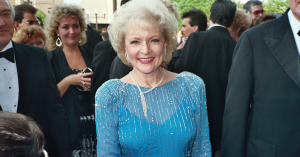
The beloved actress turns 96 today. Here are some things you might not have known about everybody’s favorite Golden Girl.
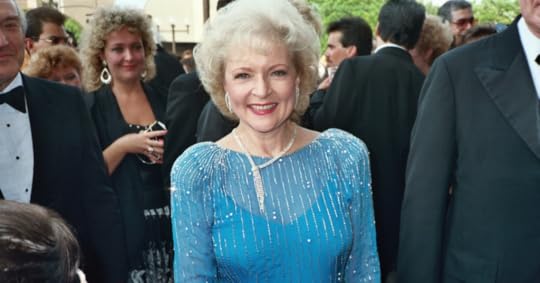
“Betty” was a very popular name for girls and women in the mid-20th century, and it’s usually a nickname for “Elizabeth.” Not in the case of Betty White. Her real name is Betty White—her parents didn’t want anybody to call her Beth or Lizzie, just Betty, so they specifically named her Betty.
White is synonymous with television—and she’s been appearing on TV since before TV was really even a thing. Her first time on TV was in 1939, a good decade before most Americans bought a TV set. “I danced on an experimental TV show, the first on the west coast, in downtown Los Angeles,” White told Guinness World Records in 2014—the year they put her in the record books for “Longest TV Career for an Entertainer (Female).”
White’s big breakthrough as a TV performer: In 1949, She got a gig hosting Hollywood on Television, a variety show that ran an astounding five and a half hours, six days a week.
One of the most popular bits on Hollywood on Television was a series of comedy sketches starring White as a suburban woman named Elizabeth. They were so popular that the show led to one of TV’s first ever spinoffs, a full-length sitcom called Life with Elizabeth. White also served a producer on the show, making her one of the first female producers in Hollywood history.
White is probably most famous for her role as sweet-but-ditzy Rose on the ‘80s sitcom The Golden Girls. She was supposed to play the flirtatious Blanche, until producers realized that role was too similar to Sue Ann Nivens, the character she portrayed on The Mary Tyler Moore Show a decade earlier. Rue McClanahan, set to play Rose, agreed to switch up roles with White. (Both wound up winning an Emmy Award for their performance.)
Who needs health food? White credits her long life—and staying relatively healthy for all that time—to her two favorite indulgences: “Vodka and hot dogs,” she told Parade. “Probably in that order.”
The post Happy Birthday, Betty White! appeared first on Trivia Books and Facts | Uncle John's Bathroom Reader.
January 15, 2018
Bucks, Greenbacks, Simoleons, and Cheddar

For better or for worse, money is an important part of life. Everybody talks about it a lot, which means there are a lot of slang terms for it. Here’s where some of them come from.
Bucks
The $100 bill is sometimes called a “C-note,” because C is the Roman numeral for 100. Roman numerals also influence the word “buck” as a money slang term. A sawbuck is an X-shaped apparatus used to hold wood for cutting. Since it’s X-shaped and the Roman numeral for 10 is “X,” the nickname “sawbuck” for the $10 bill stuck, and over time, got shortened to just “buck.”
Bucks (another theory)
There’s also evidence that in the 18th century American frontier, European settlers used animal skins as a form of currency — particularly deer, or “buck” skins.
Grand
Sure it’s “grand” to have $1,000 in one’s possession, and that’s exactly how it came into use. It was criminal slang in the 1910s because $1,000 was a grand amount of money for anybody, about double the average salary.
Cheddar
After World War II, among the goods in government-issued welfare packages was a large hunk of cheese. Getting your cheese, meant getting your government benefits, which could also include money. Over time, cheese evolved into “cheddar” and the term came to apply to all money, not just federal benefits.
Simoleons
American culture — and language — often combines two different sources to create something new. Such is the case with “simoleon,” a funny-sounding word that means “a dollar.” In 18th century England, a “simon” was a slang term for a sixpence coin, after Thomas Simon, a chief engraver and coin designer at the London Mint. That term came to the U.S. and combined with a French term for coins, “napoleon,” because the former emperor appeared on some French currency. Simon + napoleon = simoleon.
Greenbacks
During the Civil War, the Lincoln administration printed Demand Note dollars to finance the conflict. The notes were printed in green on the back, thus “greenbacks.”
The post Bucks, Greenbacks, Simoleons, and Cheddar appeared first on Trivia Books and Facts | Uncle John's Bathroom Reader.
Lana Del Rey vs. Radiohead vs. The Hollies

There are only so many notes in the music, which means that every now and then one popular song winds up sounding a lot like another popular song. Here’s a look at a case of copyright infringement that’s currently burning up the charts.

One of the bestselling albums of 2017 was Lust for Life, the fifth album by somber and ethereal singer-songwriter Lana Del Rey. One standout track was the song “Get Free,” co-written by Del Rey.
Where did she get the inspiration for the slow, haunting tune? Inadvertently, probably, but Radiohead’s 1993 breakthrough single “Creep.” In early January 2018, reports emerged that the British band might sue Del Rey for lifting too many recognizable elements from their song for use in “Get Free.” Del Rey confirmed that she’d heard from Radiohead’s attorneys about a potential lawsuit.
On Twitter, she claimed to have not been directly inspired by “Creep,” but acknowledged that there were similarities between the two songs—something she realized a few months ago. Del Rey says that in 2017, she offered Radiohead 40 percent of the songwriting royalties generated by “Get Free,” but that Radiohead turned it down—they wanted the full 100 percent. The case will probably ultimately be decided by a judge.
What’s weird about Radiohead suing somebody for stealing “Creep” is that Radiohead was once sued for stealing “Creep” from somebody else. Shortly after Radiohead hit big with “Creep,” the band was sued by Albert Hammond and Mike Hazlewood. Those guys were members of the ‘60s and ‘70s band the Hollies, probably best known for their 1969 hit “The Air That I Breathe,” a song written by Hammond and Hazlewood.
The songwriters believed that the melody to “Creep” heavily relied on the melody from “The Air That I Breathe.” So did the courts—thereafter “Creep” has been officially credited to “Radiohead, Albert Hammond & Mike Hazlewood.” They earn royalties anytime “Creep” is purchased or played on the radio—and if the Del Rey lawsuit goes a certain way, they’ll get royalties for “Get Free” as well.
The post Lana Del Rey vs. Radiohead vs. The Hollies appeared first on Trivia Books and Facts | Uncle John's Bathroom Reader.
January 12, 2018
Tonight on Your Favorite Show: A Whole New Show!
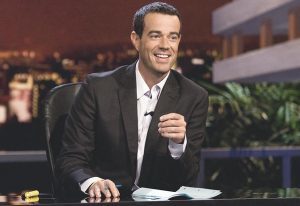
Some TV shows are successful because audiences rely on it being the same thing week after week. Other shows keep going back to the drawing board, and revamp until they hit on something that works.
Last Call with Carson Daly
After the late-night TV shakeups of the last few years, a lot of hosts switched networks and time slots. Jay Leno took back The Tonight Show from Conan O’Brien; O’Brien went to TBS, and then Jimmy Fallon moved up from O’Brien’s old Late Night show to The Tonight Show. Through it all, Carson Daly kept his show on NBC, which airs in the extremely late time slot of 1:30 a.m. It pulls in a steady audience despite being on in the middle of the night, as well as frequent format changes to pull in more insomniacs. When it debuted in 2002, it was a traditional if bare-bones talk show — the former MTV veejay sat at desk and interviewed celebrities initially without a band or a monologue. In 2009, the show was shot on location, such as at celebrities’ homes or taping bands play at real nightclubs. In 2013, the show changed formats once more. Now, Daly only appears to introduce the show and individual segments. Producers (never shown on camera) interview celebrities and a crew films bands playing at Los Angeles hotspots.
Together We Stand
Successful TV producer Sherwood Schwartz really wanted to make a TV show about parents who adopt a bunch of kids of different backgrounds. He first tried in 1974 with Kelly’s Kids. Airing as an episode of Schwartz’s The Brady Bunch, Ken Berry and Brooke Bundy played the parents. ABC didn’t pick it up for a full series, so Schwartz tried again in 1986 with Together We Stand. This time Elliot Gould and Dee Wallace Stone played the magnanimous adoptive parents of four children. After six episodes, CBS pulled the show off the air but allowed Schwartz to fix it. He did, completely abandoning the premise. Gould’s character was killed off, leaving Stone’s mom to raise four kids alone. The show was retitled Nothing is Easy…which lasted just seven episodes.
The Doris Day Show
After a long career as a singer and movie star, Doris Day headed to TV in 1968 with CBS’s The Doris Day Show. The iconic actress played a widowed mother of two who moves from the big city to a California ranch to join her father (Denver Pyle). While the show was a hit, CBS executives didn’t think a rural setting was right for Day, so in 1969 writers changed the series to be an office comedy: Day now worked as a secretary a magazine in San Francisco. That didn’t please CBS brass either, so in 1971, writers got rid of Day’s children and made her character a famous, veteran magazine writer. That format stuck…until The Doris Day Show was cancelled in 1973.
Baywatch Nights
After being canceled after a single season by NBC, Baywatch went into syndication…and became one of the most popular TV shows of all time. That was probably almost entirely because of the titillation factor: The action consisted primarily of attractive people like David Hasselhoff and Pamela Anderson wearing bathing suits and running in slow motion. Nevertheless, some TV executive thought people tuned in for Baywatch’s riveting drama, and commissioned a spinoff. When Baywatch Nights debuted in 1995, it depicted Baywatch lifeguards Mitch Buchnannon (Hasselhoff) and Ryan McBride (Angie Harmon) opening a detective agency. Baywatch Nights was dead in the water, but rather than give up, writers revamped the series. In season two, the show became an X-Files clone, with the lifeguards investigating aliens and ghosts. And then it was canceled.
The post Tonight on Your Favorite Show: A Whole New Show! appeared first on Trivia Books and Facts | Uncle John's Bathroom Reader.
December 28, 2017
The Life of Jim Nabors
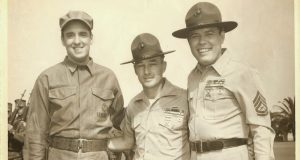
Well gaaaaaaaaaawleeeee. Jim Nabors, the actor best known for portraying lovable dimbulb Gamer Pyle on The Andy Griffith Show and Gomer Pyle, U.S.M.C. has passed away this month at the age of 87. Here’s a little bit more about the man and his life.
Nabor’s Singing Career
Serving as a stark contrast to Nabors’ embellished high-pitched Southern twang was his tremendously powerful baritone singing voice. Nabors recorded dozens of albums of ballads and easy listening. He scored five gold records and his cover of “The Impossible Dream” from Man of La Mancha was a top 20 hit in Australia in 1968.
From 1972 to 2014, he sang “Back Home Again in Indiana” at the beginning of the Indianapolis 500.
Gomer Pyle
Gomer Pyle, U.S.M.C. remains one of the most successful spinoffs — and TV sitcoms of any type — in history. It was a top 5 show for four of its five seasons. It was the second-most-watched show on television in 1969 when it was canceled — because Nabors wanted to move on and try something different. CBS quickly came up with The Jim Nabors Hour, a primetime reality show that ran for two years.
The Marines never promoted Gomer Pyle above private rank. But in 2001, the Marines made Nabors an honorary corporal…and bumped him up to lance corporal six years later.
His Private Life
Nabors was a homosexual, but not openly during his time as a major TV star (because almost nobody could be “openly” gay in the ‘60s). However, his friends and coworkers knew, and it was a long-standing rumor outside of Hollywood. So much so that in the 1970s there was a widely disseminated urban legend that Nabors had secretly married Rock Hudson, another actor whose sexuality was the subject of a lot of whispering.
Nabors’s actual partner since 1975, and spouse since 2013: a firefighter from Hawaii named Stan Cadawallader.
Nabors died in Hawaii, where he’d lived for more than 30 years. He owned a 500-acre macadamia nut farm there.
The post The Life of Jim Nabors appeared first on Trivia Books and Facts | Uncle John's Bathroom Reader.




